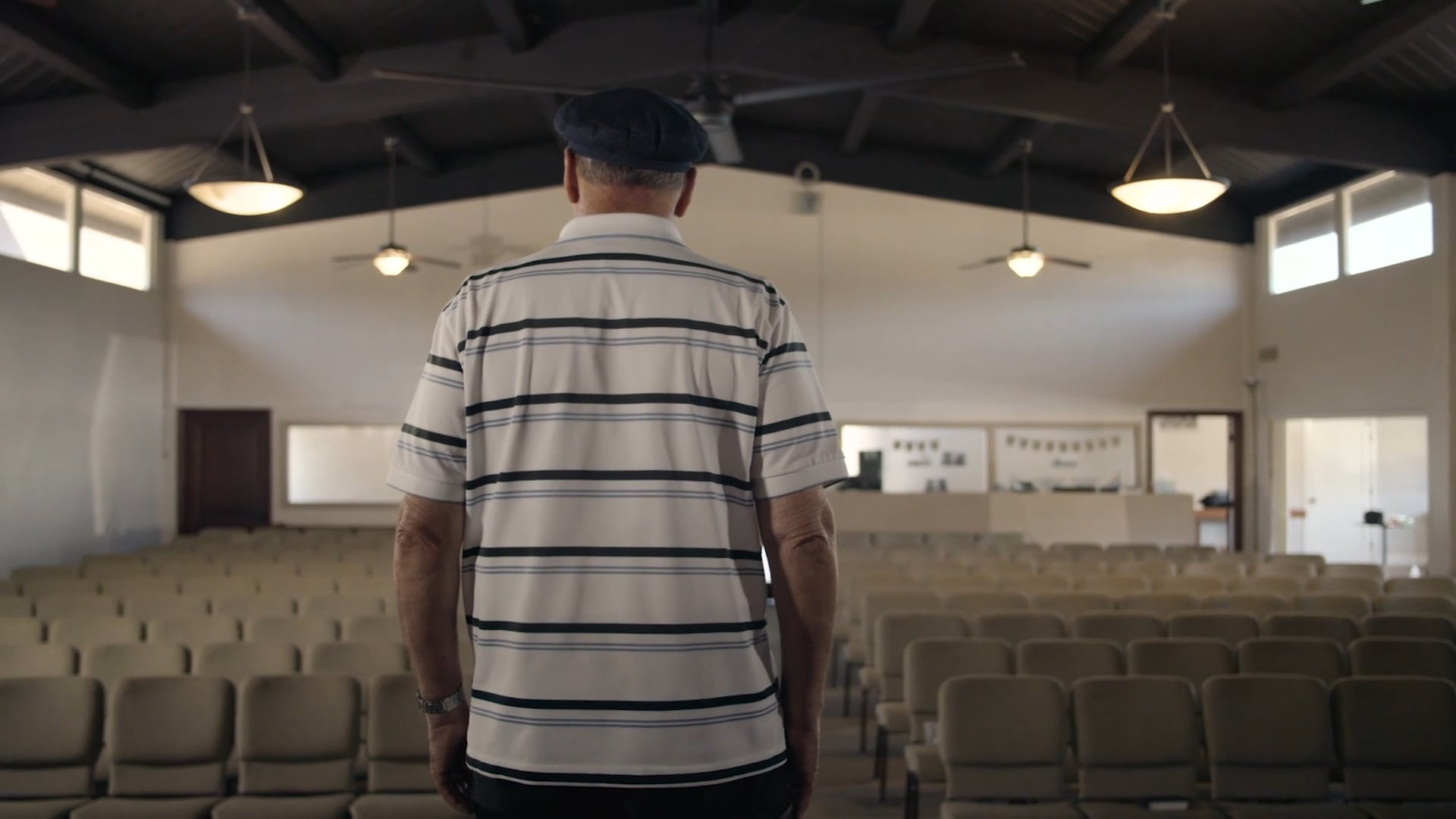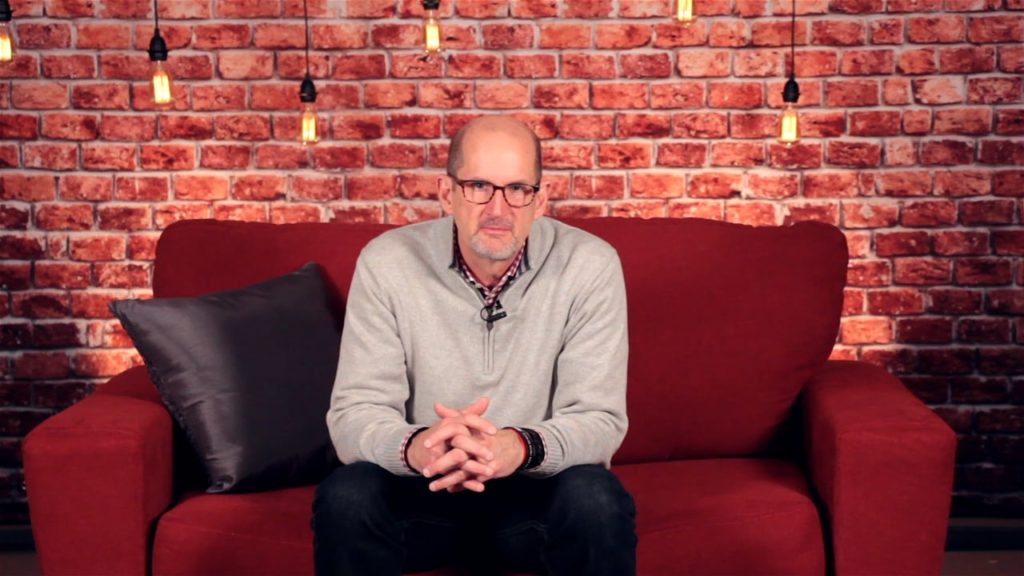Chapter 1 of La Mesa: Glory Days
That church on the hill…
Sam Calhoun knows better—churches never die in a day. And yet, the 77-year old former pastor of Windsor Hills Community Church in La Mesa, California, still remembers exactly where he was standing and exactly what he was doing the moment he first realized his church was in trouble.
“We had wanted to reach kids in our neighborhood, so we had this block party,” he says. “And I remember I was sitting right out there with this African-American young man. He was a great kid. And I asked him, ‘Son, why don’t you come to church here?’ And he said, ‘I don’t come here because this is a white church.’”
Sam tells the story like it happened yesterday. From the tear rolling down his cheek, you’d never guess it took place more than ten years ago.
“That kid looked at us and said, ‘I don’t belong here,’” he says. “That cut me. That hurt bad.” Sam takes in a deep breath, lets it out, and then quietly stares at his shoes for an awkwardly long time as if he’s still trying to come up with a response to what at the time was a very accurate description of his church.
“I knew what the church looked like back then,” he says. “And it wasn’t the neighborhood.”
And then, Sam is quiet. There’s nothing else left to say.

Windsor Hills Community Church in La Mesa, California was already in decline when Sam Calhoun took over as pastor in 2002.
La Mesa, California circa 1955 was a “We Like Ike,” crew cuts and soda fountains, Leave It To Beaver-picture-perfect postcard of American mid-century suburbia. Or at least, that’s how longtime residents remember it.
“La Mesa was a wonderful place to grow up,” say Janis Schlundt. “I remember walking everywhere. If I had a quarter, I could go to the dime store and buy anything. There were lots of families. Everybody knew everybody. Yeah, it was just a wonderful place to grow up.”
La Mesa, nine miles east of downtown San Diego, was where Janis’ parents, along with several other families, started Windsor Hills Community Church, a congregation that, in its heyday, would’ve felt comfortable and familiar even to many modern-day Southern Baptists.
“When this church was started in the ‘50’s,” says Sam Calhoun, “they were reaching a lot of young families here. They had a great youth group, great music. They had all the classrooms full. Everybody in town knew it as ‘that church on the hill.’”

Lu Jean Conrad and Janis Schlundt have more than 60 years of memories. They’ve both been a part of Windsor Hills Community Church ever since they were babies.
No one here can point to a date on the calendar when everything began to change. Lu Jean Conrad, another lifelong resident of La Mesa, thinks it might have started as early as 30 or 40 years ago when the popularity of living in a close-to-downtown community like La Mesa began to drive real estate values to we-can’t-afford-to-live-here-anymore levels.
“I think what changed in La Mesa was the housing got more and more expensive,” she says. “As our young friends got out of school and got married, they couldn’t afford to live here. Everybody just kind of started to leave.”
That’s when Lu Jean, Janis and the rest of the congregation at Windsor Hills began to notice mini-mansions being built on the hills surrounding La Mesa, and taquerias and halal meat markets and bubble tea cafes opening up in the shopping centers along University Avenue. That’s when a little boy told their pastor, “I don’t belong in your church.” And that’s when Sam Calhoun remembers everyone at Windsor Hills, or at least everyone who was left, beginning to worry.
“Finally, one day I told them, ‘Look around. If we stay like this, what do you think is going to happen?’” he says. “One wise individual said, ‘Well, five to 10 years from now, we probably won’t be here.’ And I said, ‘You’re right. So now what?’”
“All we knew to do was pray. So, that’s what we committed to do.”

Declining churches come to Mark Clifton looking for help. “I tell them all, ‘You’re not alone and you don’t have to die.’”
Mark Clifton begins almost every sermon with a question: “What about a dying church says, ‘Our God is great and his gospel is powerful’?”
Clifton is the senior director of replanting at the North American Mission Board, and even if he’d never set foot in La Mesa, California, he could probably tell you every chapter and verse of the Windsor Hills Community Church story. He’s heard it a hundred times before. “There’s no doubt that at one time that church was very much a part of that community. That’s why it was planted there,” he says. “But communities aren’t stagnant. They’re constantly changing. Unfortunately, after a while it’s easier for a church to stop trying to figure out who’s in their community and start doing things for themselves. It happens. Churches just wear down and remove themselves from the life of the community. And then, they begin to die.”
Mark Clifton has done the unhappy math.
“We plant 1,200 churches a year, and that’s great. But we lose more than 800 churches a year,” he says. “So, we only net gain about 400 churches a year, and the population is growing faster than that. So, instead of moving the ball down the field, we’re moving the ball backward. We’re actually losing ground.”
But for Mark, even worse than the numbers themselves are what those numbers say to the world.
“We know that the church is not a building. But the community does identify the church building as the presence of God in that neighborhood,” he says. “So, when that building closes its doors, that makes a statement to the community and that statement is, ‘Our God is unable to even keep this church going, let alone transform your life.’”

Windsor Hills Community Church was once the “glory of God” in La Mesa. Sam Calhoun says, “We needed the glory back.”
Sam Calhoun was not the first pastor of a dying church to ask his congregation, “Now what?” He had no answer for the African-American boy in the parking lot. He had no answer for his dwindling, aging congregation. All he knew was there were unreached people in La Mesa, and they couldn’t let their church die.
“When this church was humming, I really believe it was the glory of God in this community. The glory faded,” he says. “We needed the glory back.”


